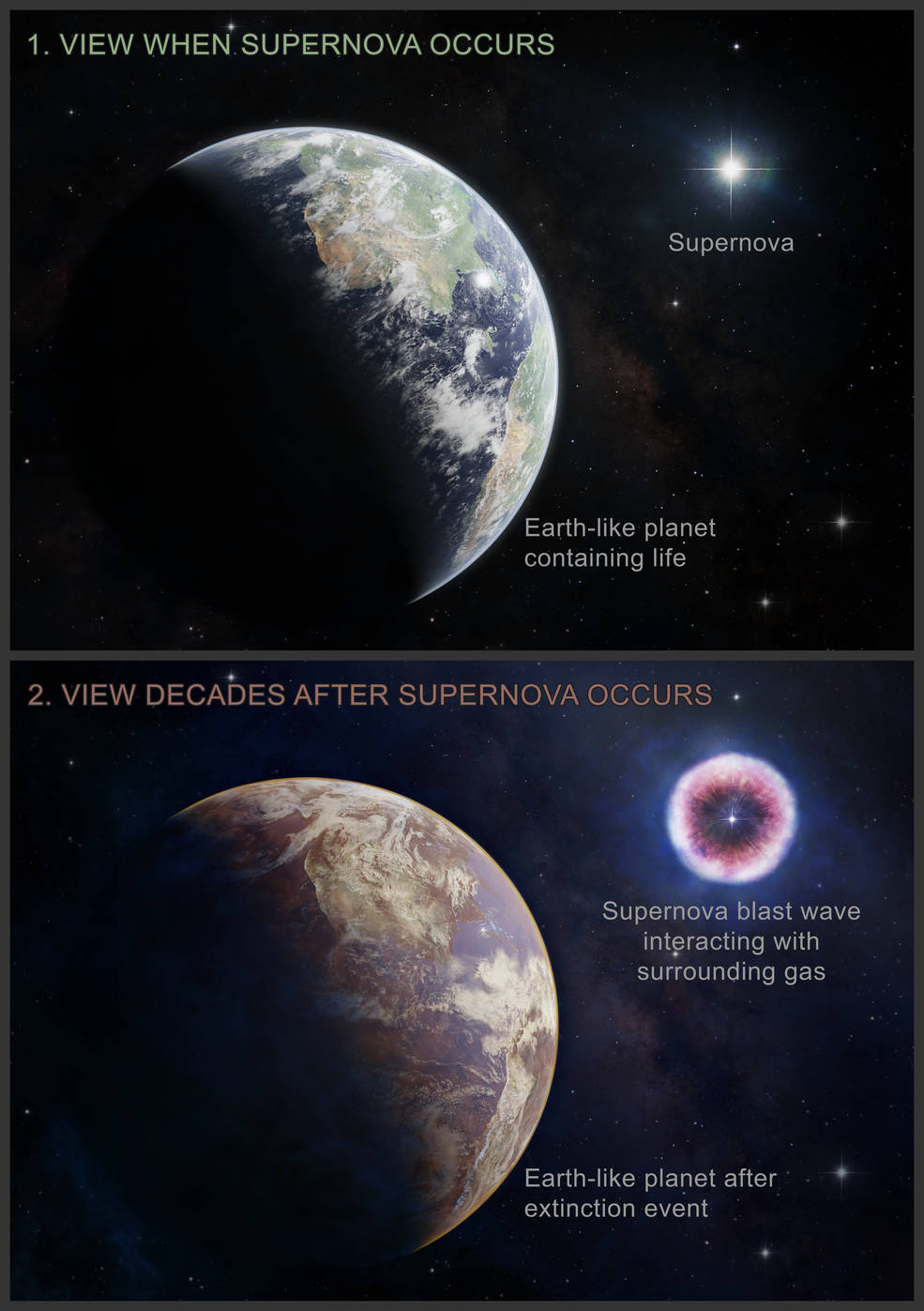A study has shown that the intense X-rays produced by explosive waves from exploding stars could pose a significant threat to the habitability of planets like Earth. The findings reveal that these X-rays can strip the atmospheres of planets and lead to the extinction of life on those planets, posing new risks to the search for exoplanets. life support capabilities.

New research reveals that intense X-rays from explosive waves from exploding stars could threaten life on planets like Earth, posing new risks to exoplanets’ habitability .
The Peril of Supernova Blast Waves
This newly discovered danger results from a supernova’s blast wave striking dense gas surrounding the exploded star. This impact generates a large dose of X-rays that can reach Earth-like planets months to years after the explosion and last for decades, potentially causing an extinction event.
Exploding Stars Pose New Dangers to Exoplanet Habitability
The study, based on X-ray observations of 31 supernovae from NASA’s Chandra X-ray Observatory, Swift and NuSTAR missions, and ESA’s XMM-Newton, demonstrates that planets can be subjected to lethal radiation doses up to about 160 light-years away.
X-rays and Planetary Life

But why do exploding stars pose dangers to exoplanet habitability? If a surge of X-rays sweeps over a nearby planet, the radiation could severely disrupt the planet’s atmospheric chemistry. For Earth-like planets, this process could deplete ozone levels, leaving life exposed to harmful ultraviolet radiation from its host star, potentially leading to an extinction event.
Atmospheric and Ecological Consequences
Prolonged lethal X-ray exposure could produce large amounts of nitrogen dioxide in an Earth-like planet’s atmosphere, creating a brown haze and damaging plants, causing a “de-greening” of land masses.
Shrinking Galactic Habitable Zones
These high-energy events could reduce the areas within the Milky Way galaxy, known as the Galactic Habitable Zone, where conditions are conducive to life as we know it.
Urging Further Observations
Due to the sparse X-ray observations of supernovae, researchers encourage follow-up observations of interacting supernovae for months and years after the explosion. The paper detailing these findings appears in the April 20, 2023 issue of The Astrophysical Journal.






